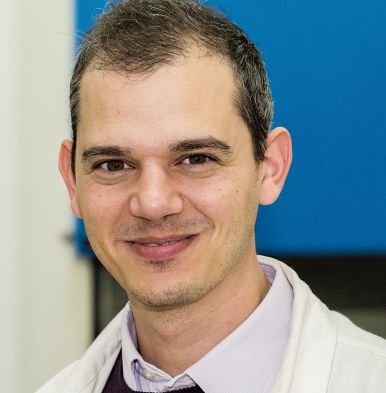What is genetic behaviour? And how does understanding its workings help researchers find cures for diseases? Here we chat to Dr Joseph Borg, the man who first discovered the existence of important DNA mutations in the KLF1 Gene.
 Most of us have a basic understanding of what DNA is and how it affects our biology. What most of us may not know, however, is just how powerful its influence can be in terms of diseases.
Most of us have a basic understanding of what DNA is and how it affects our biology. What most of us may not know, however, is just how powerful its influence can be in terms of diseases.
Over the years, in fact, researchers have discovered that not only does DNA determine our eye colour and height, but it is also coded in a way that can predispose us to many ailments, including various kinds of cancer, complex disorders (such as Parkinson’s disease and Diabetes Mellitus Type 2) and classic disorders (such as thalassaemia and cystic fibrosis).
But DNA is not just something you’re born with; it’s something that changes as you grow older and according to the environment you’re exposed to.
“A very important influence on DNA is where you live, what you eat, where you work and even epigenetics (how different environmental influences affect DNA),” explains Dr Joseph Borg, an academic lecturer for the Department of Applied Biomedical Science within the Faculty of Health Sciences at the University of Malta.
“Some genetic disorders, such as thalassaemia, haemophilia and cystic fibrosis, you’re born with, while others, like diabetes, dementia or Alzheimer’s, you develop as a result of the environment you live in and other predisposing factors that includes genetics,” he adds.
Joseph first became interested in genetic behaviour while reading for his B.Sc(Hons) degree at the University of Malta, and, although he graduated in 2004, he has remained active in this field of research.
“There are five main areas in biomedical science research,” he explains. “Haematology (the study of blood and blood-related diseases), histopathology (the study of tumour and cancer biology), microbiology, biochemistry, and blood transfusion science and immunology, which often go hand-in-hand.
“I found all this incredibly fascinating; so much so that my B.Sc thesis was on the genetics of coeliac disease in Malta. But I have to admit that I got more than I had bargained for in my undergraduate work…
“Besides working in the laboratory to conduct genetic testing, I was also introduced to clinical research dealing in and discussing what I was researching with certain recruited participants for the project.
“It turned out well, however, and I continued using that model throughout my Masters and PhD,” he explains. “In total, the research took six years, and it was at the end of that period that I discovered a genetic mutation that had been previously unknown.”
The Krüppel-like factor, or as it is more commonly known, the KLF1 gene, was discovered through DNA sequencing, which is when the DNA is stripped down to single, molecular level.
“It was all rather coincidental, really,” Joseph explains. “Every child born is tested for abnormal haemoglobins (the red proteins responsible for transporting oxygen through the blood), and, when we identified a mother and her newborn with abnormally high levels of foetal haemoglobin, we decided to test her immediate family.
“Through that we discovered that in an extended family of 27 members, 10 of this woman’s kin had the same abnormally high levels of foetal haemoglobin, and further research revealed that the gene that codes the haemoglobin molecule in the foetal haemoglobin (which is usually switched off at birth) was still on and intact!”
This was a eureka-moment for Joseph, and it has since paved the way for further research into how certain diseases could be cured in the future. Internationally it was also a turning point and researchers as far away as in Australia and Asia are now building on what Joseph had initially discovered about the KLF1 gene.
“Presently, we’ve identified some different mutations and the ways in which these control the functions of the haemoglobins,” says Joseph. “So far, we’ve discovered that these genes may not always affect haemoglobins as it was first assumed.
“Now we’re actively studying that, and we’ve realised that the KLF1 gene is not the sole gene that controls this haemoglobin switch, so we’re looking for the other genes and tandems which may be having a similar impact. Even so, this will take time, and we’re at a point where we’re sifting through many gigabytes-worth of data.”
But how does this affect the general public?, we wondered.
“Each person’s DNA is unique, and that means that we respond differently to things,” Joseph explains. “Personalised medicine and treatment is the future of medicine and it is only through the research of the genes in DNA that we can truly boost pharmacogenetics (the study of how inherited genetics can affect the way our bodies react to drugs and medicine) and make strides forward on this front.”
Joseph’s research was not funded by RIDT but we help many other researchers achieve their breakthroughs in all faculties, including medicine, archaeology and technology. Please click here for more information on how to donate to research of this kind.
